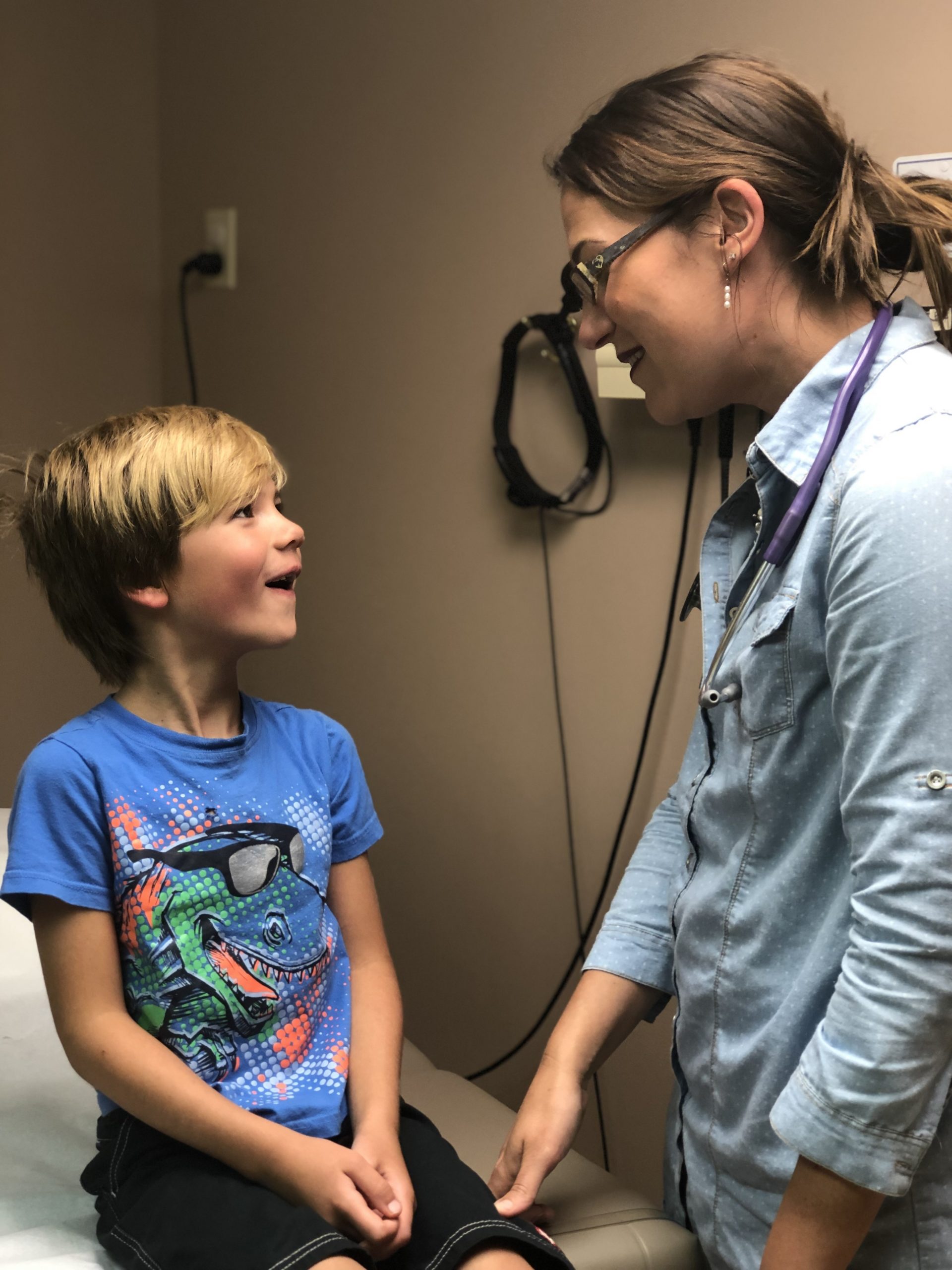Improve Immunization Rates in Your Adult Patients
CME Helps Address Common Barriers to Vaccine Hesitancy
January 25, 2021
By Eileen Denne, CAE, APR
Want to improve the rate of immunizations in your adult patients over age 50? With life expectancy increasing in older adults, it is more important than ever for them to receive recommended vaccines as suggested by the Centers for Disease Control and Prevention’s (CDC) Advisory Committee on Immunization Practice (ACIP). Those may include influenza, pneumococcal, tetanus, and zoster vaccines. The recent availability of COVID-19 vaccines adds an additional impetus to address common barriers to recommended adult vaccines.
Experts are finding that that trust in vaccines, particularly among nonwhite individuals, is at a low point. A recent Washington Post editorial cites a September Pew Research Center poll which highlighted the difference in attitudes toward vaccines by race: It found that 32 percent of Black adults would definitely or probably take a vaccine when available, compared with 52 percent of whites and 56 percent of Hispanics.
During flu season and as COVID-19 vaccines become widely available, PAs and other healthcare providers are working to increase the level of trust in vaccines.
CME helps address common barriers to adult immunizations
In collaboration with The France Foundation, and supported by GlaxoSmithKline, AAPA is offering “Getting to Yes: Practical Strategies for Navigating Immunization Decisions With Older Adults” to a number of state chapters, as well as on Learning Central. Three modules for 1 AAPA CME credit describe the current state of adult immunizations; key concepts in behavioral economics which may affect immunization rates in older adults; and offer suggestions for helping patients make good decisions regarding immunizations.
Instructors include Sarah McQueen, DMs, PA-C, vaccine coordinator at Dayspring Health in Williamsburg, Kentucky, and adjunct faculty at Lincoln Memorial University PA Program; Alan Schwartz, PhD, MD, University of Illinois College of Medicine in Chicago Professor and Interim Head, The Michael Reese Endowed Professor of Medical Education, Research Professor, Medical Education, Department of Pediatrics; and Michelle Kerr, MPAS, PA-C, Chief Advanced Practice Provider, Urgent Care Division, Carolinas Health Care System, Atrium Health Levine Children’s Urgent Care – Cotswold.
[Catch-Up, Get Ahead Vaccination Tools]

McQueen describes Module 1, which focuses on the CDC’s ACIP recommendations for pneumococcal, shingles, tetanus, and influenza vaccines for adults over the age of 50.
“It is really important for practitioners to know that our population continues to live longer and more people are doing so thanks to medical advances and treatment therapies. This causes more people to be at risk for increased disease burden and complications due to the gradual deterioration of our immune system that occurs as we age,” McQueen says.
McQueen describes a useful “toolbox” of tactics to improve vaccination rates, including using the CDC vaccine schedule app, referring to the CDC website on vaccine information for adults, checking standing orders, holding vaccine-specific clinics, bundling vaccines to decrease patient visits, and emphasizing COVID-19 safety.
Language matters around vaccines
“We also need to make sure as PAs that we recognize that our language matters when we speak of vaccines,” says McQueen. “We need to use strong normalizing language in our recommendations to patients. Don’t ask for their permission but instead say, ‘It looks like today you’re due for this vaccine.’”
Module 2 describes key concepts in behavioral economics which may affect adult immunization rates in older adults.
“People aren’t always rational about vaccination,” states Schwartz, who leads Module 2. “We want to help people make better decisions.” The three behavioral concepts he discusses as related to vaccinations include: defaults and norms, the availability heuristic, and peak and end rule.
Is it worse to get symptoms from vaccines or from the disease, Schwartz asks? If people worry more about the vaccine than getting a disease, one way to address their concern is to communicate that vaccination is standard, that, “Most people like you are getting vaccinated. This helps reinforce the idea that patients will be doing things that other people like them also do.”
Help communicate the harm of the disease
His second concept is around people’s memories of seeing or hearing about getting vaccinations. “What do people remember about vaccines? For some, like flu and tetanus, the perceived side effects are often easier to remember than the disease that vaccine is protecting them from.” If this turns patients against getting a vaccine, he suggests ways to make the harm of disease more available, by publicizing how many people are affected by diseases, like actual rate and making them memorable, such as using celebrities as examples.
[Find CME and Other Member Benefits]

Make memories of vaccination visits better
The third concept is to ask how people remember vaccination visits? Usually, Schwartz says, our memories are based on what an event was like at its worst and what it was like at end.
“How can we make the worst part of vaccination visits better?” he asks. “We can look for ways to make good delivery less painful, such as using oral vaccines, distraction, asking patient to breathe, or topical anesthesia. Then we can make the last part more tolerable by getting the vaccine over first in patient visits. Also, rewarding or praising the patient can make the visit better– adults appreciate a pat on back.”
In summary, Schwartz says, we can help people get vaccinated by structuring the environment to make vaccination the default and social norm; we can help by make the consequences of non-vaccination more available and memorable; and we can structure by making their memories of vaccination visits better.

Devising strategies to address barriers
In Module 3, Kerr helps PAs devise strategies for addressing common barriers to patient adherence to recommended adult immunizations through a series of case studies.
Barriers to immunizations include those as the clinician-level such as lack of time and resources, says Kerr, and patient-level barriers such as “The doctor didn’t tell me I needed these immunizations,” or “I didn’t think I needed them because I am in good health.”
Kerr walks participants through five case studies to help PAs learn how to change knowledge and behavior in adults.
Among the strategies for overcoming patient barriers described in Model 3 are: structuring the environment; making a strong recommendation; considering the SHARE model: share reasons, highlight positive experiences, address patient questions, remind patients vaccines protect them, and explain potential costs of getting infectious disease.
Her advice for removing barriers suggests that providers:
- Take advantage of every encounter to update adult patients on vaccines
- Consider patient perspectives and barriers in facilitating discussions about vaccines
- Use multiple strategies to help patients accept vaccines
- Have a strategy/back-up plan based on rewards to encourage patients to return for needed vaccines
More information about Getting to Yes: Practical Strategies for Navigating Immunization Decisions With Older Adults.
Visit Vaccines.gov for more information about vaccines and vaccine-preventable diseases, as well as the CDC’s immunization schedules.
Eileen Denne is AAPA director of Corporate Communication. Contact her at [email protected].
You May Also Like
PAs Urge Catch-Up Vaccinations during National Immunization Awareness Month
Thank you for reading AAPA’s News Central
You have 2 articles left this month. Create a free account to read more stories, or become a member for more access to exclusive benefits! Already have an account? Log in.



